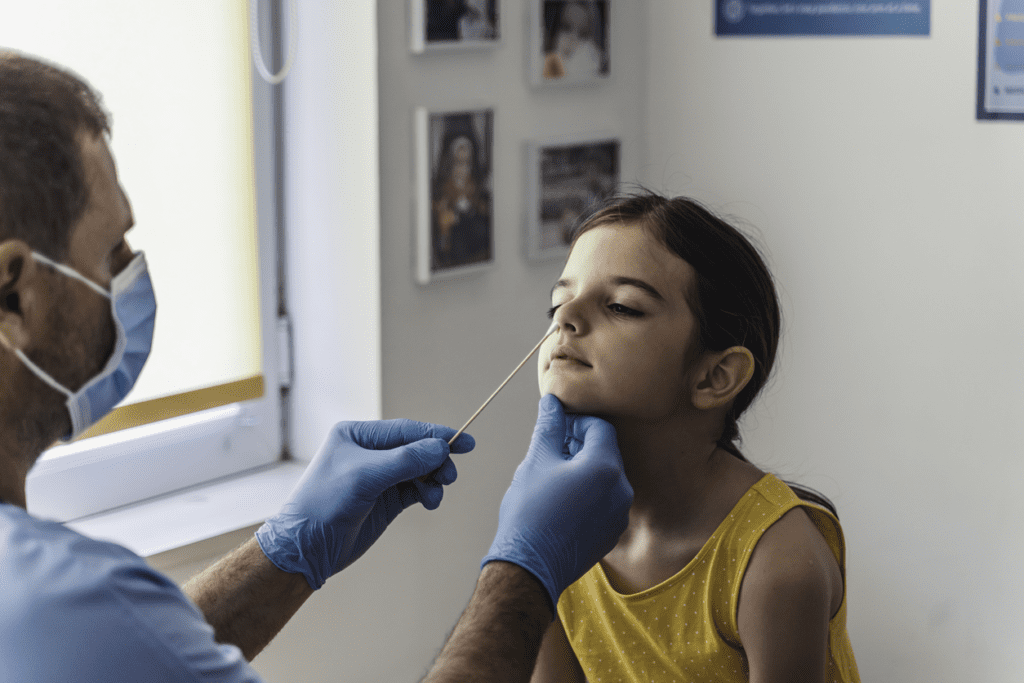
Primary.Health’s school-based CLIA-waived testing for common illnesses represents a proactive approach to student health management.
In today’s fast-paced educational environment, schools face numerous challenges in maintaining student health and maximizing instructional time. One innovative solution is the implementation of onsite CLIA-waived testing for common illnesses such as strep throat, influenza, COVID-19, and sexually transmitted infections (STIs). This approach offers significant benefits for students, staff, and the broader community.
CLIA-waived tests are simple laboratory screenings that carry a low risk of incorrect results, provided the test is performed correctly by trained individuals under accepted laboratory practices. This advantage makes them ideal for use in non-laboratory settings like schools.
Under the Primary.Health CLIA waiver, we train school staff to conduct these tests directly, drastically improving the speed and efficiency of diagnosing common ailments. CLIA-waived testing is a critical aspect of Primary’s five-point workflow to reduce respiratory illness in schools.
Let’s take a look at five key benefits of CLIA-waived testing in schools.
Rapid Diagnosis and Treatment
One of the primary advantages of onsite testing is its ability to quickly identify and address health issues. When students fall ill, traditional processes often involve sending them home and recommending a doctor’s visit. This approach can delay diagnosis and treatment, potentially worsening the condition and prolonging absence from school.
With onsite testing, school nurses can immediately screen for common illnesses. A rapid strep test, for instance, can provide results in minutes, allowing for prompt antibiotic treatment if necessary. Similarly, quick flu or COVID-19 tests can help determine whether a student needs to be isolated or can safely remain in class.
Reduced Absenteeism
When illnesses are caught and addressed early, recovery times are often shorter. Additionally, in cases where symptoms mimic those of more serious conditions but turn out to be benign, students can quickly return to class rather than spending days at home waiting for doctor’s appointments and lab results.
Containment of Outbreaks
Schools are notorious breeding grounds for infectious diseases. Onsite testing can play a crucial role in containing potential outbreaks. By quickly identifying cases of flu, strep, or COVID-19, schools can take immediate action to prevent spread, such as isolating affected individuals, notifying parents, and implementing enhanced cleaning procedures.
Improved Sexual Health
Many teenagers are hesitant to seek STI testing at clinics due to embarrassment or lack of transportation. By offering confidential onsite testing, schools can encourage responsible health practices and early detection of STIs, potentially preventing long-term health complications and reducing transmission rates.
Cost-Effectiveness
While implementing onsite testing does require an initial investment, it can prove cost-effective in the long run. By reducing absenteeism, many schools can maximize their per-pupil funding. Additionally, early detection and treatment of illnesses can prevent more serious (and costly) health complications down the line.
Join the Primary.Health CLIA program
School-based CLIA-waived testing for common illnesses represents a proactive approach to student health management. Use Primary’s CLIA certification to perform simple laboratory tests with the guidance of our expert team. Get program support, clinical oversight, easy testing workflows, and secure technology – everything you need to maintain a safe and efficient learning environment.
